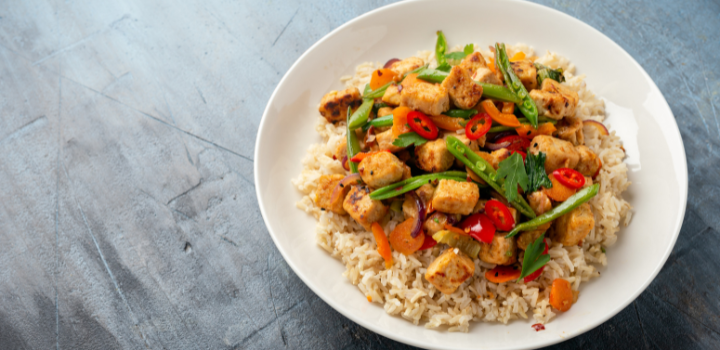
Innovation is fundamentally changing the choices countries have to reduce food imports. Densely populated countries like Singapore have been entirely reliant on other countries to produce their food. In 2019, Singapore announced a target to produce 30 per cent of its own food by 2030. The only way they can achieve this is by replacing some of the meat and dairy its population consumes with alternative protein sources.
Alternative protein products aim to have a similar taste and texture to the meat and dairy products they replace. Innovation is driving developments far beyond early alternative protein products which were identifiably vegetarian. Techniques like precision fermentation, already widely used to produce vegetarian rennet, could disrupt the market for traditional meat and dairy staples with closely comparable products that have a much smaller land footprint.
These new products are a big opportunity for Europe. The continent reached the limit of its agriculturally productive land decades ago. Current dietary habits have, therefore, forced more production overseas. There just isn’t enough land in Europe to support the resource intensive, high animal protein diets adopted over the past 50 years. Governments are grappling with questions around how to secure food supply in the face of global shocks, whilst needing to do more to cut their climate impacts and restore nature. But, if countries block the sale of alternative proteins, as Italy has recently done to cultivated meat, they will close the door on an important route to food security.
In new analysis we have explored the opportunity for alternative proteins to reduce Europe’s reliance on imports. We have looked at what developing the market for alternative proteins could mean for the land needed to feed the people of ten European countries: Denmark, France, Italy, Germany, the Netherlands, Poland, Romania, Spain, Sweden and the UK. Although alternative proteins won’t of course replace all meat and dairy, they provide the opportunity to reduce beef imports from Brazil, for example, whilst still consuming domestically bred steak. We found that high ambition to shift diets in this way could free up land in other countries used to produce meat and dairy for the European market, equivalent to Spain in size. It could also liberate an area equivalent to France within Europe.
Much of the meat and dairy eaten in Europe is processed. Products like milk powder, egg proteins and the meat in microwave meals are likely to be amongst the first products for which alternative proteins become a cost competitive option. It is often assumed that reducing meat and dairy consumption requires people to change their behaviour. But in this case, alternative protein consumption would increase whilst consumers continue to make choices based on taste, convenience and price.
Governments would then have a choice about how to use the land freed up. Our report considers three priorities for this land: to bring more production onshore, to expand semi-natural habitats rich in nature, or expand agroecology.
High innovation around alternative proteins could reduce the land required overseas to feed our ten studied countries by 75 per cent. At the same time, semi-natural habitats could expand within the countries to meet the habitat recovery targets under the EU’s Nature Restoration Law. At the same time, the area farmed organically could quadruple, exceeding the EU’s target to farm 25 per cent of land organically by 2050. To gain such benefits, a high innovation and supportive policy environment would be needed.
Far from being a threat to European farmers, as some fear, increasing the consumption of alternative proteins creates opportunity for farmers to boost their incomes. Domestic farms could play an even greater role in feeding their populations at the same time as diversifying into other paying activities, like carbon sequestration and nature restoration. This could bring new and resilient income streams to their farming business that aren’t subject to weather fluctuations.
The market for carbon sequestration is only set to grow. Residual greenhouse gas emissions must be offset by 2050 to reach net zero. Engineered carbon removal technologies are part of the solution but are very expensive. However, in our ‘high innovation’ scenario for alternative proteins, more land based carbon storage options, like trees and peat, could reduce the demand for engineered removals substantially. We calculate that the ten countries we studied could together be saving €21 billion annually in costs in 2050. The other benefit of this is that payment for more land-based carbon removal options would be channelled directly into rural communities.
Across the world, countries, such as Singapore, China and the United Arab Emirates, are already investing to grow their alternative proteins industries. If European countries don’t act soon to compete, they risk losing a potential commercial advantage in a new worldwide market.
Governments across Europe face choices about the future of their food systems and land management. Alternative proteins offer great potential to bring more of Europe’s production onshore, whilst restoring nature and tackling climate change. It’s up to governments to decide whether they want a steak in this growing industry that offers so much opportunity.
- SEO Powered Content & PR Distribution. Get Amplified Today.
- PlatoData.Network Vertical Generative Ai. Empower Yourself. Access Here.
- PlatoAiStream. Web3 Intelligence. Knowledge Amplified. Access Here.
- PlatoESG. Carbon, CleanTech, Energy, Environment, Solar, Waste Management. Access Here.
- PlatoHealth. Biotech and Clinical Trials Intelligence. Access Here.
- Source: https://greenallianceblog.org.uk/2024/05/09/eating-more-meat-and-dairy-alternatives-is-the-route-to-self-sufficiency-in-europe/
